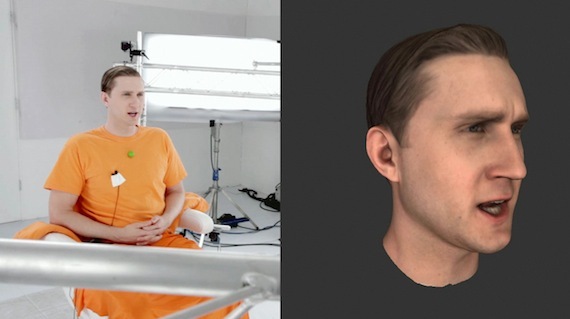Unlike literature or film, video games did not set off to tell a story during it’s humble beginnings. Attempting to virtually create recreational activities like pinball, video games were simplistic algorithms designed to “blip” and “bloop” a square object back and forth between paddles. Eventually, these pixels evolved into more complex shapes, from descending invaders from space to Blinky, Pinky, Inky and Clyde. Jump to the present, and we’re being treated to games telling complex stories through big budget cut scenes in games like the Uncharted series, and allowing gamers to make decisions that allow for multiple tiered story branches, (à la Mass Effect). Integral to these stories are the performances within them.
It can be argued that the earliest form of video games telling complex narratives came from point and click PC adventure games and Japanese role playing games (RPGs). Still, the extent of character interaction was typically restricted to pop up text boxes and little to no voice work. This, of course, evolved into low fidelity voice work, typically performed by non-actors (often by the developers/designers themselves). Even at its best, you still had B-movie performances much akin to the Sega CD Classic “Sewer Shark.” Suffice it to say, the medium was a long stone’s throw away from being a respectable form of story-telling. However, I will argue that much like the film industry, video games are now entering a renaissance period (à la “The New Hollywood” for filmmaking). Where as Pong was a nickelodeon, and Super Mario Bros. was a “talkie,” we’re now seeing video games expressing more artistic visions, typically spearheaded by creative heads of studios.
One of these creative individuals, albeit controversial, would be Brendan McNamara. A Brit living in Australia, McNamara launched an ambitious six year project to bring a late 1940’s detective drama to life. The integral aspect of the project centered around a new performance capturing technique called “MotionScan,” which used depth analysis to capture actor performances as you would see them on film, and recreated them within the video game engine. Essentially, this avoids the “uncanny valley” issue that plagues many games when trying to present humans in a believable and/or realistic fashion. The developers made these performances crucial to the gameplay, allowing for the player to read emotions during interviews and interrogations, forcing you to decide whether or not a character is lying or telling the truth.
Critics were quick to point out that the facial capturing delivered on what it set out to do (in spite of some game design flaws), yet there was still a disconnect of these realistic faces with the rest of the body, which often moved in marionette and/or robot-esque fashion, thus bring back that “uncanny valley” effect. Seeking to remedy this, David Cage (head of the French studio Quantic Dream) worked with his team to augment this technology to capture the entire body. Body capturing is not a new development, with sports games using these white “golf-balls” to deliver kinesthetics in-game; conversely, this new technology steps it up a notch with capturing the entire body in the same methodology that MotionScan captured the faces of L.A. Noire and takes away all subsequent animation work needed by artists to make these performances come to life. Game designers can add textures to these bodies, essentially making wardrobe, makeup, and visual effects after the performances have been captured and entered in as data.
All of this gives game directors, art designers, and technicians an interesting new opportunity to deliver film-quality performances and set them aside in the game engine, making pre-rendered visuals essentially obsolete. Recently at GDC (Game Developers Conference) in San Francisco, Cage and company revealed a tech demo of this new technology entitled “Kara.” The video showcases what can be expected from their next game and from the giant presentational leap over their previous works, I’m excited to see what they can do with this new tech. Check it out below and sound off in the comments if you believe this new technology will change the topography of gaming or will just be another flawed, albeit interesting, experiment from Quantic Dream (i.e. Heavy Rain).



